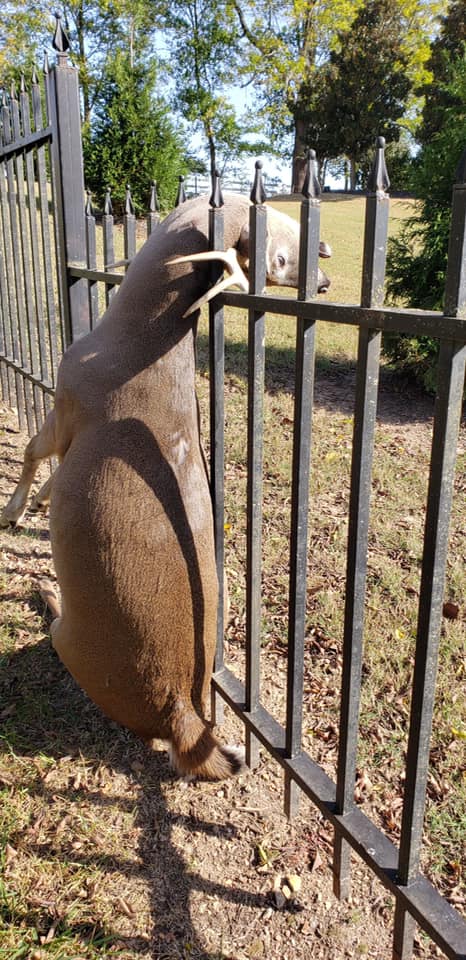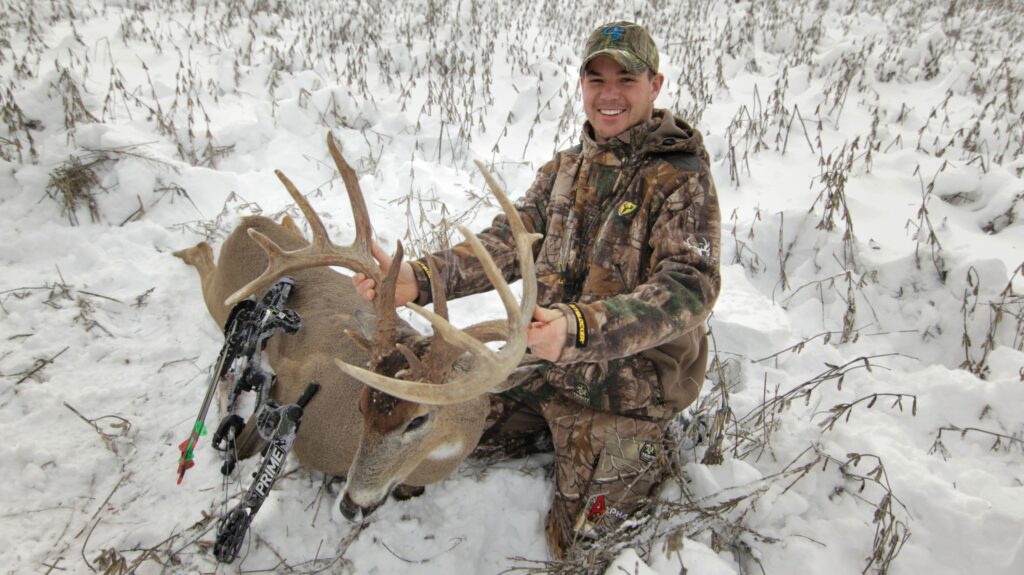If you’re a deer, there are a lot of ways to die WARNING: Graphic photos

How to Capitalize on Late Season Weather Fronts

Harsh weather of the late season can cause hunters to stay at home. That’s a shame because late season weather fronts can be golden for the hunter who is willing to brave the conditions. By Bernie Barringer When I was young I was fortunate to have a neighbor who was a bowhunter. He became somewhat of a mentor to me as he took me out bowhunting many mornings and evenings until I got a driver’s license and was able to transport myself to the areas I hunted. During one of these drives, he made a statement one time that has stuck with me through the 45 years I have been toting a bow into the whitetail woods. “When the deer are on their feet, you need to stay put and let them come to you,” he said. “But when the deer are bedded, that’s when you should be going to them.” He’s gone now, but after all these decades, this seeming overly simplistic advice has become the cornerstone of my late season hunting strategies. The advice to stay in the stand when the deer are moving and feeding is solid, but most hunters don’t follow the second part of the equation; the part where you go on the offensive and go to the deer when they are bedded down. This advice is never more true than during a late season when the deer are hunkered down in thick cover waiting out a snowstorm. Get Your Sneak On If a deer can have a puzzled look on its face, this doe had one as she looked up from her bed and saw me hunkered down in the swirling snow only 12 feet away. She looked as if she simply couldn’t believe what she was seeing. She didn’t even get up as I moved off. I didn’t find the buck I was after on that particular outing, but I learned something. Deer just aren’t accustomed to seeing hunters out in their thick bedding areas during a blizzard. But think about it; what better time to still hunt through thick bedding cover than when the deer’s ability to detect your sound scent and sight is diminished? When the weather is nasty, bucks head to the creek bottom thickets, standing corn and cattail sloughs where they can hunker down out of the wind to wait out the storm. Moving through these areas with great caution can put you shockingly close to a mature buck. In addition to their diminished ability to detect danger due to the conditions, they tend to let their guard down. Deer are so unaccustomed to seeing a person in there during these times that they often pause upon recognizing you, giving you enough time to get off a shot. This is especially true in cattail sloughs and in standing corn fields. I have shot deer in their beds from 2-3 yards when they had no clue I was on the planet. Move slowly with the wind in your face as much as possible, picking your way along, step by painstaking step. Visualize everything around you looking for parts of deer and movements such as the flicker of an ear or turn of a head. You won’t see whole deer, you’ll see parts of them, then you can plan your final approach. Strategic Stand Sits We’ve all noticed that the deer pile into the feeding areas whenever a storm ends in the afternoon. I once watched this phenomenon from the seat of my pickup, but these days, I want to be in the stand as the storm ends. Today’s technology puts radar right at our fingertips. By viewing the radar on a phone or tablet, we can predict the moment the snow will end and I want to be in the stand when that happens. By heading to a stand positioned over a food source a half hour before the snow quits, I have allowed my tracks and most of my ground scent to be covered up by snow, and I am position to strike when the deer appear. All this, of course, takes some planning ahead of time. Glassing and using scouting cameras will tell you where the deer are most likely to appear in the fields. Additionally, knowing the bedding areas the deer use during harsh weather fronts also gives you an advantage. In the winter, deer use two primary kinds of bedding areas. I call them thermal bedding areas and solar bedding areas. The thermal areas are the ones I mentioned earlier where the deer tuck in out of the wind in the thick stuff during cloudy, windy and snow or rainy conditions. Solar bedding areas are preferred during sunny days even when the thermometer drops to the bottom. Following a storm, a cold front usually moves in with high blue skies and northwest winds. Deer will find a south-facing slope where they can take advantage of the sun’s warming rays while the wind blows over the top of them. I’ll find beds right on the back side of a ridge. The bucks like to bed here because they can smell what’s behind them and see the area in front of them. These areas usually have little to no thick ground cover because of tree canopy, so the deer can get plenty of sun. Knowing if the deer are more likely to be bedding in a solar bedding area or a thermal bedding area—and knowing where these areas are located–will be a big advantage in your decision of where to set up to ambush them on their way to their evening feeding spots. Know Where to Go In the winter, deer need to eat a lot to create the body heat necessary for survival. That means they will take chances with daylight feeding patterns they wouldn’t take when the living is easy in the early season. You may see mature bucks feeding in open fields fully two hours before dark, which is the middle of the afternoon
